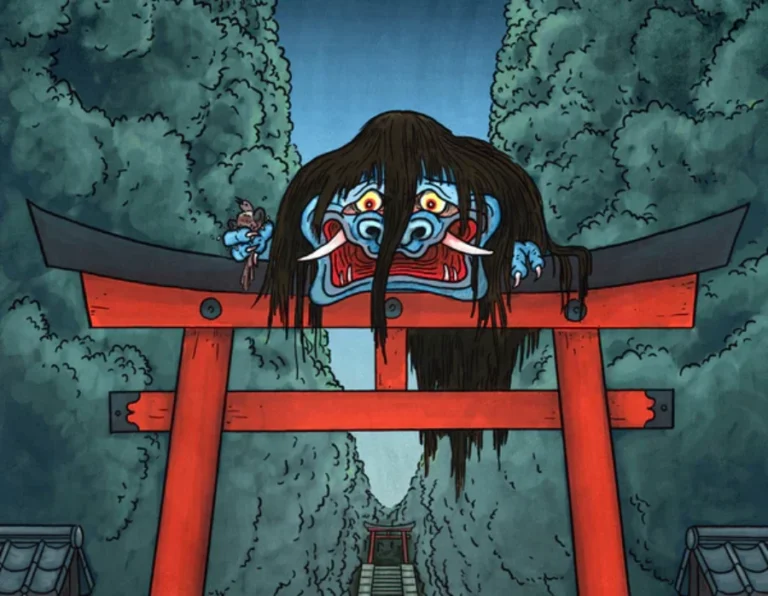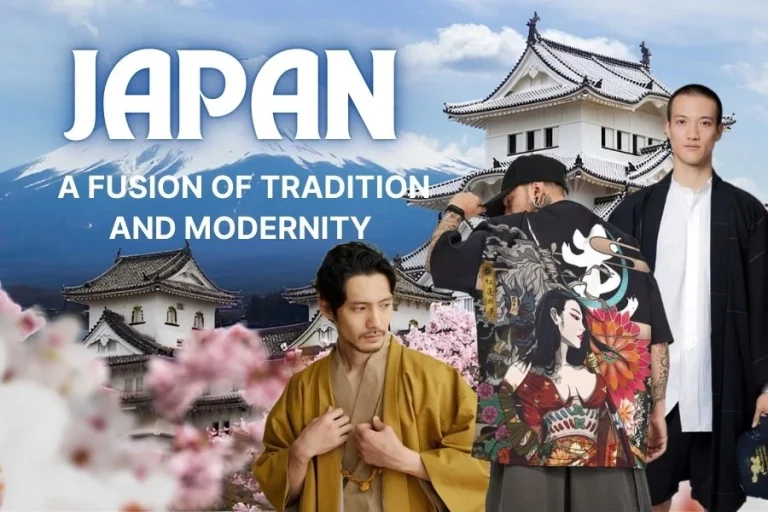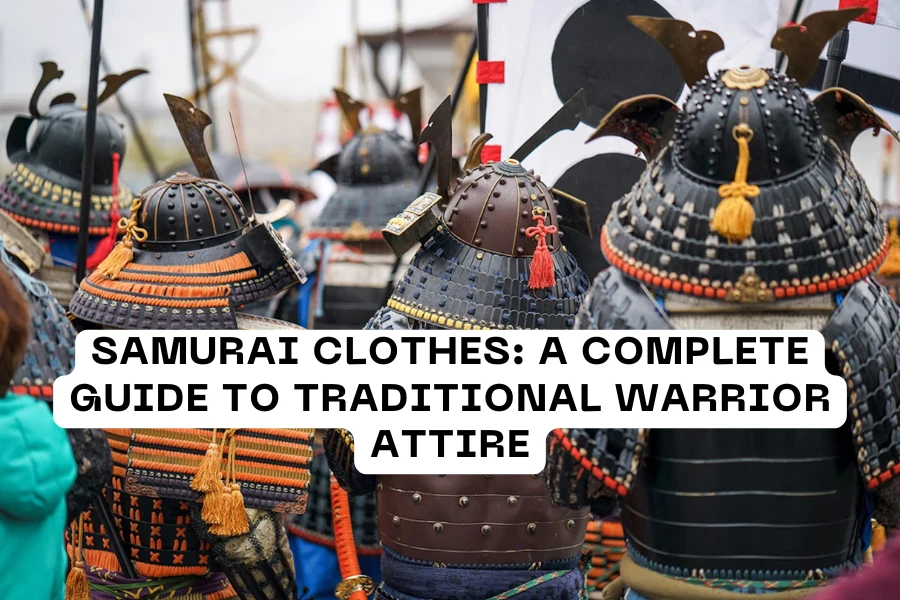
When mentioning Samurai – the elite warriors of ancient Japan, many people will think of brave warriors in majestic armor holding sharp katana swords. Samurai clothes are armor and many different types. So have you ever wondered what samurai would wear when participating in important ceremonies or daily life? If so, don’t skip this article. Kamicrew will give you a complete view of samurai costumes, from everyday clothes to formal armor.
The Evolution of Samurai Clothes
Before we get into the details of each part of the samurai outfit, let’s look at the evolution of samurai armor throughout history.
Starting from the Heian period (794 – 1185), samurai first appeared as an army of the upper class nobility. The armor of this period was the Ō-yoroi – a large, heavy box armor designed specifically for fighting on horseback. This type of armor had a large protective plate on the left side because arrows were usually shot at the left side of the warrior.
By the Kamakura period (1185 – 1333), the Ō-yoroi was only popular among the upper class nobility, while ordinary samurai would wear the Dō-maru. This is a lighter and more flexible type of armor, hugging the body to suit both infantry and cavalry.
While Kamakura armor was worn as a coat, during the Muromachi period (1333 – 1573), Haramaki armor would use a strap at the back, combined with sode (shoulder protectors) and kote (forearm protectors). This was a period of continuous civil war between the Warring States and Sengoku Jidai, so the samurai clothes needed to be more flexible.
During the Azuchi-Momoyama period (1573 – 1603), the army and samurai switched to Tosei-gusoku armor – a modern and bulletproof type of armor. This was the period when matchlock guns (tanegashima) began, so the armor would be equipped with a thicker chest protector.
Finally, during the Edo period (1603 – 1868), when Japan was unified, armor became more of a symbol than a weapon. During this period, the Tosei-gusoku armor was more elaborately decorated, with Kabuto (helmets) crafted with impressive designs that showed the wearer’s prestige.
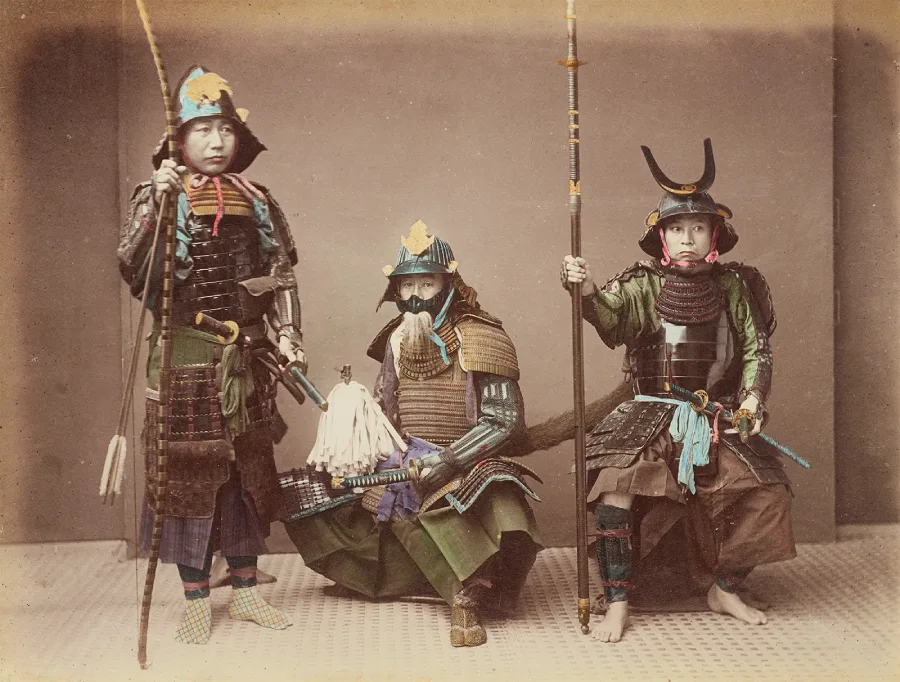
20 Essential Elements of Samurai Clothing
Now, let’s dive into the analysis of samurai clothes. We can divide samurai clothing into three parts: battle armor, casual wear, and inner lining.
Samurai Armor
First is the samurai battle armor, commonly known as Yoroi. This is the most complex type of costume when it comes to samurai clothes because it consists of many different parts. Samurai armor is often handmade and requires great meticulousness, including:
Kabuto: Kabuto is a helmet, often meticulously crafted from high-quality metal and leather. Each Kabuto is designed specifically for its owner, serving both to protect the head and to demonstrate the samurai’s authority and identity.
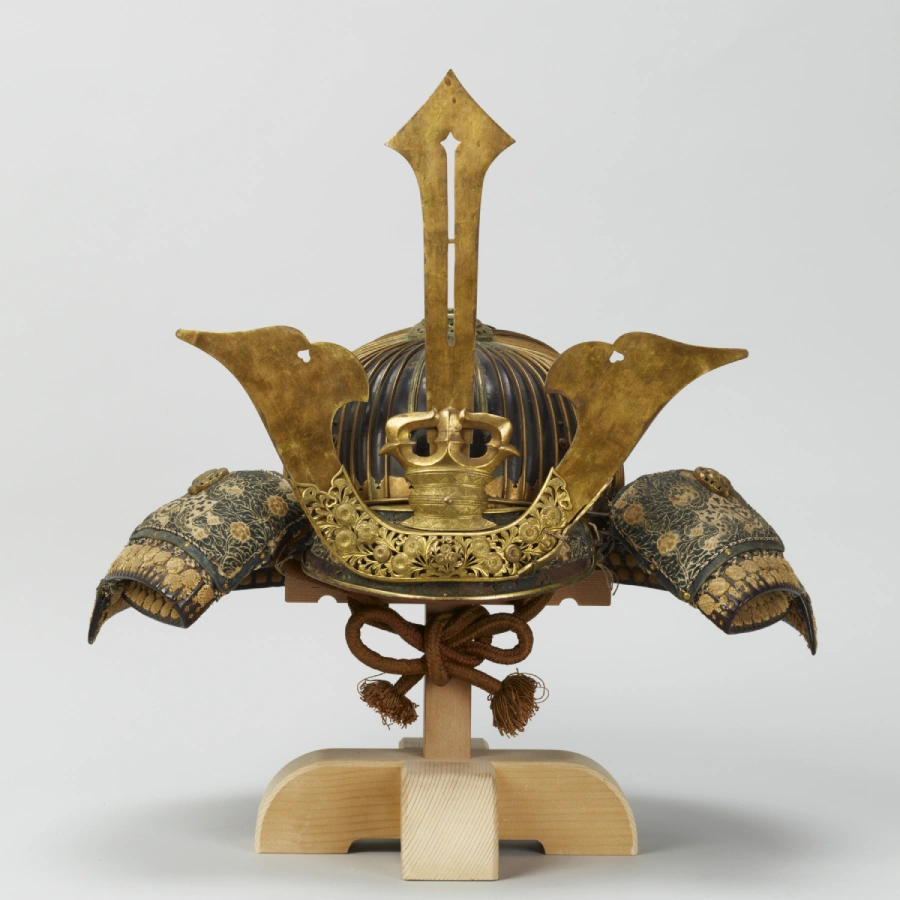
Maedate: Maedate is a decoration on the front of the helmet with various patterns such as mythical creatures or abstract symbols, usually made of wood or metal. It serves to decorate the Kabuto and express the samurai’s aspirations.
Mengu: Mengu are masks made of iron or lacquered leather to protect the face and create a fearsome appearance. Like other traditional Japanese masks, mengu are often demonic or calm warrior faces to strike fear into opponents.
Nodowa: Nodowa is one of the important parts of samurai clothes, which protects the neck and throat. This part is usually made of iron or hard leather, perfectly connected to the armor to ensure flexibility and safety.
Sode: A sode is a specially designed piece of shoulder armor that is designed to protect while remaining flexible and not affecting the mobility of the arm. It is usually a large, decorative, durable, lightweight piece of armor that covers the entire shoulder.
Kote: This was the steel armor that covered the outer arm, extending from the shoulder down to the fingertips. The kote was usually made of chain mail or a piece of cloth with a small metal plate, and connected to the armor with laces
Dō: The dō is the main and most important part of samurai clothes, protecting the chest and abdomen. This body armor is usually made of iron or sturdy leather, covering the entire body but still allowing the samurai to move flexibly. The dō will be wrapped around the body, and fastened with a buckle on the side or back to adjust to different sizes.
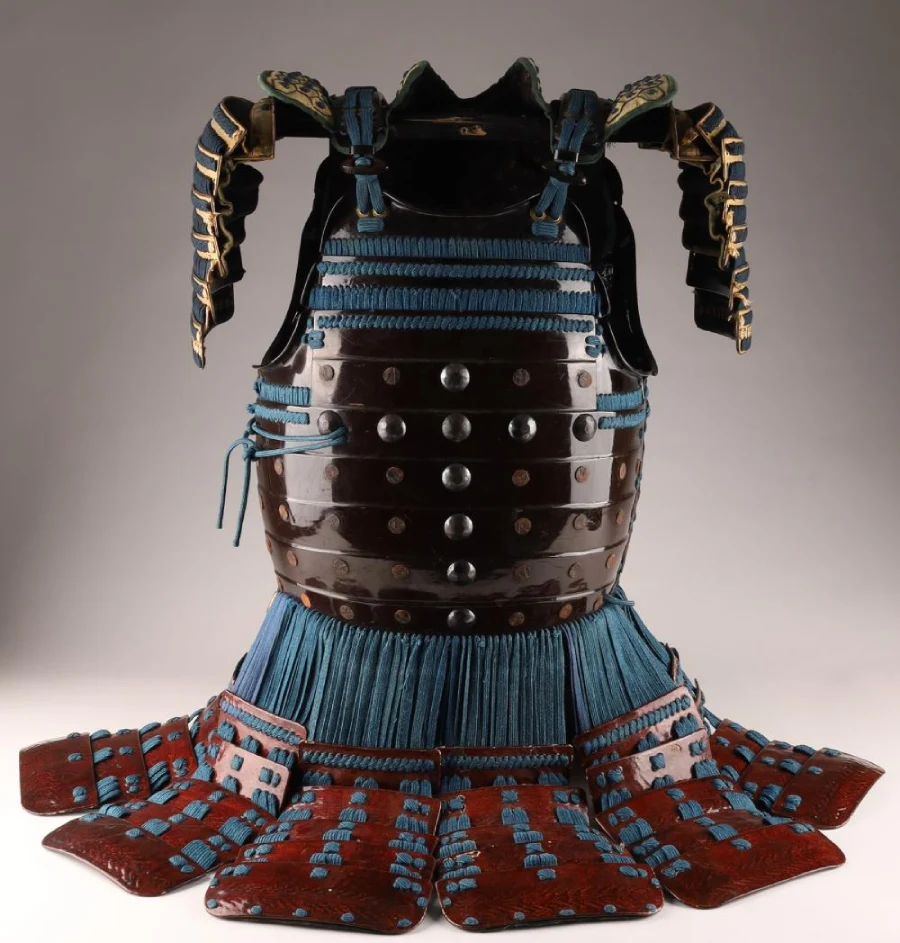
Dō-maru: This is a more modern and upgraded version of the Dō, designed to cover the entire body of the warrior. The Dō-maru is made of small metal plates woven together, providing a tight fit but still flexible enough for movement.
Uwa-Obi: Uwa-Obi is a wide belt used to hold the upper part of the robe in place and to support weapons. This is where samurais would hang their katanas, daggers, or other weapons.
Sarashi: Sarashi was also an essential part of samurai clothes. It was a long white cotton cloth wrapped inside, which helped reduce friction between the armor and the body, creating comfort. Sarashi served as both a cushion to prevent the outer armor from shifting too much and a lining to absorb sweat.
Haidate: Haidate is a type of thigh apron that protects the thighs and upper legs of a samurai in battle. This type of thigh armor protects the legs without affecting the flexibility of movement.
Suneate: This is the armor that protects the shin, covering from the knee to the ankle. Suneate is usually made of vertical metal plates or chain mail, fixed with straps to hug the leg and be flexible when moving.
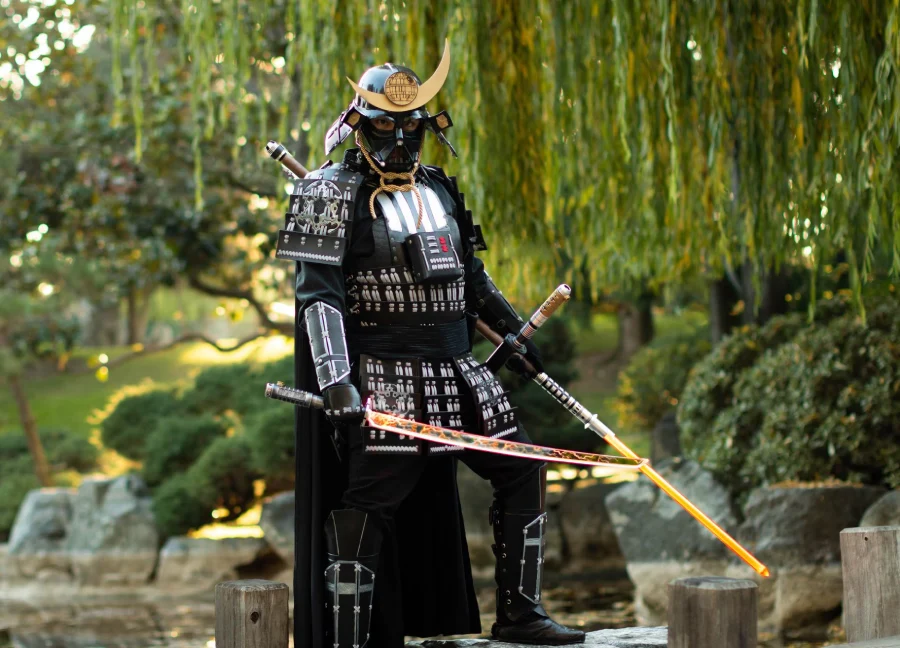
Daily Samurai Clothes
While the samurai’s armor focuses on protecting the body during combat, their everyday clothing focuses on their symbolic and honorable role. In everyday life, samurai often wear items such as:
Kasa: Kasa is a traditional wide-brimmed hat made from tightly woven Japanese straw. This is the type of hat often used when performing daily tasks, and helps protect the samurai’s identity in public.
Kamishimo: Kamishimo is one of the popular types of samurai clothes, often worn on formal occasions. It includes hakama pants and kataginu worn over kimono. Kataginu is a sleeveless jacket with stiff shoulders and long, representing the important status and role of the samurai.
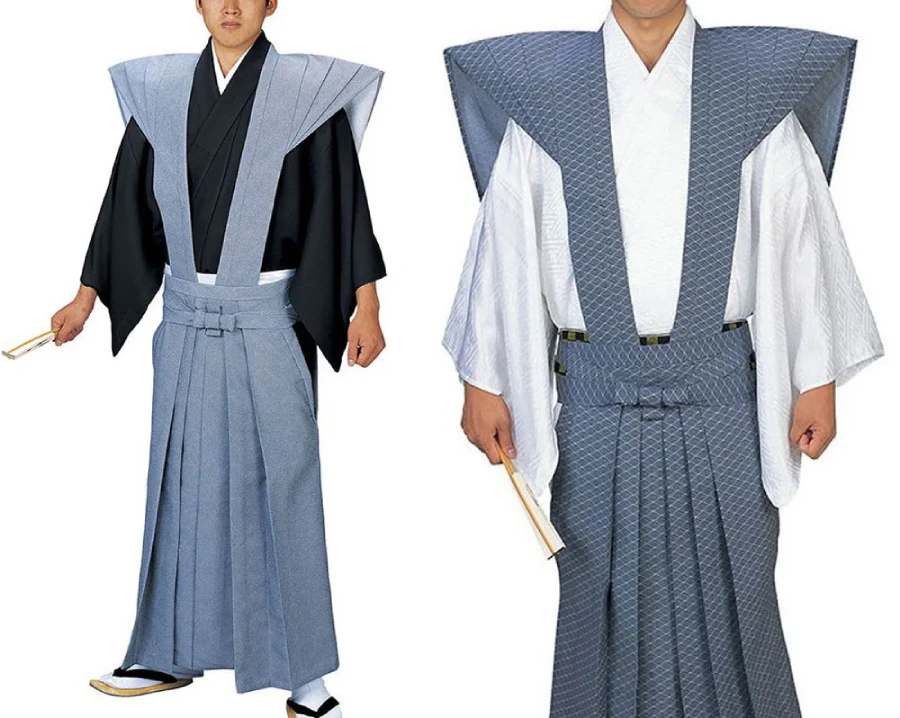
Montsuki: A montsuki is a formal kimono distinguished by the family crest on the chest, back, and sleeves. This traditional clothing for men is often worn on ceremonial occasions to show status and lineage.
Tattsuke-bakama: These are pants designed to be more flexible when riding horses or practicing martial arts. Tattsuke-bakama is designed to be tight at the ankles and gradually become looser at the thighs for ease of movement.
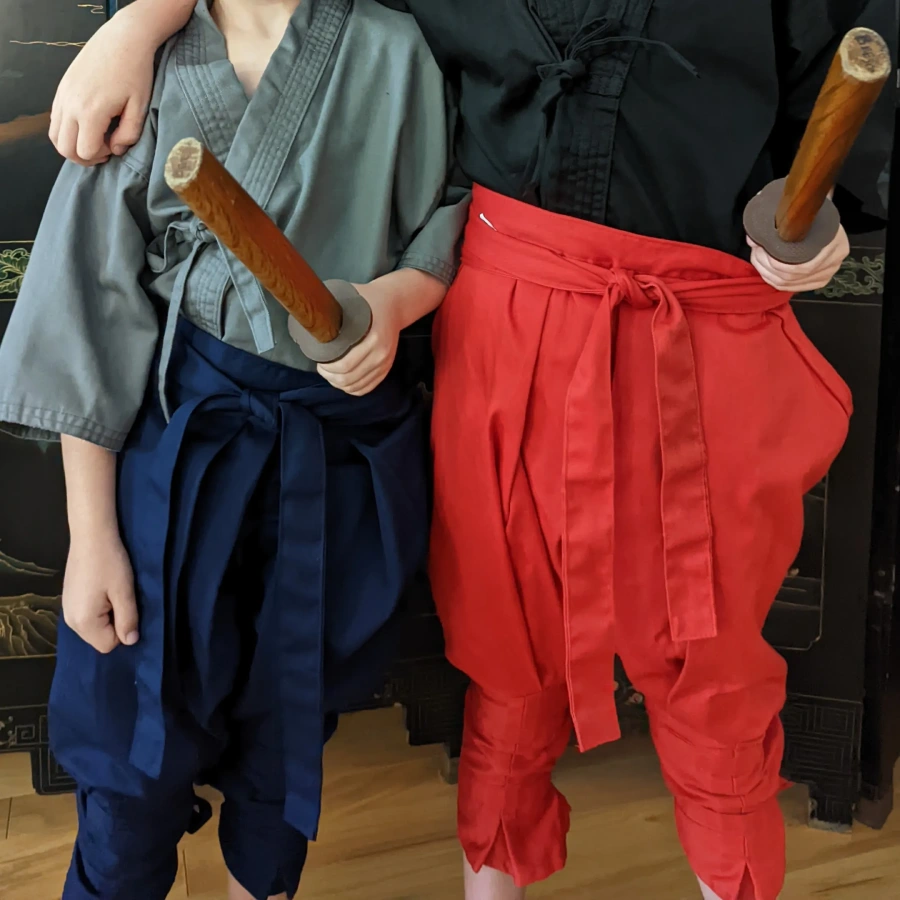
Hakama: Hakama is traditional clothing for women and men, usually made from silk or cotton. They are wide-legged pants or pleated skirts, often worn over kimonos to add formality.
Tabi: A traditional type of sock in samurai clothes, with a unique split-toe design. The split-toe design of Tabi helps create a better grip, especially when wearing traditional sandals such as zori or geta.
Waraji: Waraji is a familiar traditional type of sandal samurai, made from straw or hemp. This type of sandal has the advantage of being light, durable, and suitable for hiking.
Jika-Tabi: This is a type of boot specially designed in the form of Tabi socks. The boot is designed with a split toe, high collar, and reinforced sole, providing comfort and good durability.

Although the samurai era has ended, samurai clothes still have a strong influence on modern Japanese fashion. Many items from samurai costumes are inherited and transformed to create new styles.
For example, Haori (samurai short coat) is often combined with casual styles. Kamon (family crest) is often printed on t-shirts, jackets, or accessories to show off classic beauty. Or hakama pants are strongly applied in streetwear style. If you love samurai clothes and want to incorporate them into your daily fashion style, you can refer to Kamicrew’s samurai collection!
Wrap Up
Hopefully, this article has given you a deeper understanding of samurai clothes and its fascinating historical facts. Over time, samurai armor evolved to adapt to changing circumstances and address previous limitations. However, it has always retained its traditional elements, including essential components such as the kabuto, maedate, mengu, sode, and dō-maru. Additionally, samurai wore lightweight and comfortable garments like kasa, hakama, and tabi for greater flexibility in daily life. If you’re interested in exploring more about Japanese fashion, be sure to check out other articles from Kamicrew!
